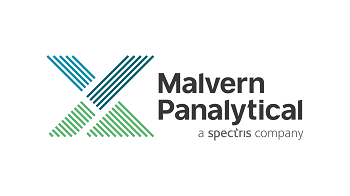Laser diffraction is now widely used as standard method for routine particle size analysis in many different industries. The advantages of the technique make it an ideal alternative to many conventional particle size analysis techniques, such as sieving. This article discusses the top 10 considerations for assessing whether to use laser diffraction as an alternative for sieving.
Sample Size
Laser diffraction needs a smaller representative sample when compared to sieving. However, it can also use larger samples. For a dry-dispersed laser diffraction experiment, the sample size ranges between 10 mg and 30 g to acquire strong results. For laser diffraction, the length of the experiment is the only practical limit on sample size because it is possible to continually feed or even place the instrument online.
Conversely, the practical limit of sieves relies on the quantity of material that can be handled by each sieve. Hence, laser diffraction has more flexibility to analyze the most polydisperse material.
Repeatability and Reproducibility
Typical laser diffraction measurements show repeatability of better than 0.5% and reproducibility of better than 1% when compared to sieving methods. These statistical advantages provide one of the key arguments supporting the transition from sieves to laser diffraction.
Measurement Time
Speed is the key factor in the selection of an analysis technique in modern material testing, particularly for process monitoring. A routine laser diffraction analysis takes roughly 15 seconds for 10 g of material. This means that laser diffraction can perform measurements almost in real time, devoid of the requirement for process instrumentation and can provide results as soon as the completion of the run.
Conversely, Sieve techniques need a few minutes for each run in addition to cleanup time, causing material wastage and limiting the number of samples that can be run in a single shift.
Besides providing better control over process conditions, laser diffraction optimizes lab efficiency and throughput.
Operating Cost
The operating cost of a laser diffraction system is lower than that of a sieve system. Laser diffraction systems need simple window cleaning, or window replacement in certain cases, to keep the system work optimally. Occasionally, it is necessary to change the vacuum bag for a dry dispersion system to ensure performance. However, in a sieve stack, sieves need to be replaced in the event of wire breakage and tearing to ensure continuity with previous measurements.
Customizing Reports
Malvern Panalytical’ Mastersizer 3000 software suite enables customization of reports to deliver most relevant data to the user. During correlation to a sieve stack, percent-in-range can be obtained by simply selecting the corresponding size ranges and including them directly to the report. It is also possible to display particle size distribution and other common statistical parameters on a single report for facilitating specification transfer for demanding customers.
Size Range
Laser diffraction systems have a size range spanning between 0.1 and 3500 µm, which is much wider compared to that of sieves. Laser diffraction equipment, such as the Mastersizer 3000 from Malvern Panalytical, is capable of covering a broad dynamic range in a single measurement. Sieves have limited ranges, covering tens to hundreds of microns and delivering poor performance under 45 microns.
In addition, plate-like or needle-like particles that have dimensions much larger than the sieve openings may pass through openings, thus causing misrepresentation of the true size of particles in a sample.
Maintenance and Cleaning
Quick brushing prior to loading the next sample is enough for dry dispersion laser diffraction instruments to perform the next measurement. The Aero S disperser used in the Mastersizer 3000 is also available with a pre-coded cleaning routine. Typical turn-around time for cleaning between samples is roughly 30 seconds. This is in stark contrast to sieving techniques, where extensive cleaning and weighing of the screens is required between experiments.
Automation
The entire line of laser diffraction technologies from Malvern Panalytical is built upon the Standard Operating Procedure (SOP), thereby reducing inter-user variance while optimizing efficiency. After establishing an SOP for sample measurement, the sample needs to be loaded and properly named by the user and rest of the operation will be performed by the instrument.
Although automated sieve techniques are available, they still have shortcomings such as longer experiment times, operator variance, and longer cleaning times. The Mastersizer line provides the faster and more accurate technique for acquiring accurate particle size results.
Sample Containment
The Mastersizer line of dry dispersion accessories is fully sealed from the sample loading area through to the vacuum bag, thus minimizing exposure hazards to users. Quicker and easier disposal is possible with the vacuum collection system.
Furthermore, the instrument can be fitted into an enclosure or hood to ensure optimum safety when running dry samples, thanks to its smaller size. Conversely, sieve methods are more susceptible to exposure risk as they have open architecture. In addition, the sample is not directly collected into a convenient container for disposal.
Smaller Footprint and Lower Noise
The Masterizer 3000 laser diffraction system is roughly half the size of its predecessor, thus occupying less space. The system is capable of running on virtually any internal air supply, with the option to locate the vacuum outside of the lab for noise reduction. However, a sieve assembly is dirty, noisy, vibrates and requires more bench space.
Conclusion
The aforementioned considerations clearly show that laser diffraction systems have several advantages over sieve systems and can be used as a replacement for sieving in particle size analysis.

This information has been sourced, reviewed and adapted from materials provided by Malvern Panalytical.
For more information on this source, please visit Malvern Panalytical.